Overview
This article delves into ten predictive hiring signals tools that significantly enhance recruitment strategies by leveraging advanced analytics and AI technologies. These tools not only improve hiring efficiency but also reduce time-to-hire and elevate candidate quality through data-driven insights. Real-world success stories from companies like Unilever and Chipotle serve as compelling evidence of their effectiveness. By integrating these tools into your recruitment process, you can transform your hiring strategy and achieve remarkable results.
Introduction
The recruitment landscape is experiencing a seismic shift as organizations increasingly adopt predictive hiring signals tools to enhance their talent acquisition strategies. These innovative solutions not only streamline the hiring process but also empower recruiters to make data-driven decisions that significantly improve the quality of hires. Yet, with the rapid integration of AI and analytics, how can companies ensure they effectively leverage these tools while navigating the complexities and ethical considerations that accompany them? This article delves into ten cutting-edge predictive hiring signals tools that promise to revolutionize recruitment, offering insights into their benefits and the challenges organizations may face in their adoption.
Websets: AI-Powered Predictive Hiring Solutions for Enhanced Recruitment
Websets offers an that transforms the use of predictive hiring signals tools. By harnessing advanced algorithms, it enables recruiters to effectively identify and connect with the most suitable candidates. The platform includes a powerful search engine that allows users to navigate extensive datasets, enriching search results with crucial information such as LinkedIn profiles and previous work experience. This capability streamlines the hiring process and significantly improves the quality of hires, positioning it as an essential tool for contemporary hiring strategies.
The impact of AI on hiring efficiency is profound, with firms reporting a 30-50% reduction in time-to-hire and substantial cost savings. As organizations increasingly adopt AI technologies, 87% of companies are now integrating AI into their hiring processes, indicating a strong trend toward automation. Furthermore, recruitment analytics are evolving, with skills-based selection projected to rise to 81% in 2024, underscoring the importance of competencies over traditional qualifications.
Industry leaders recognize the transformative power of AI in hiring. For example, Unilever's use of AI-driven video interviews and gamified assessments has cut their time-to-hire by 75%, demonstrating the effectiveness of these predictive hiring signals tools. As we approach 2025, the integration of AI in recruitment will continue to enhance efficiency, reduce bias, and improve applicant experiences, placing Websets at the forefront of this evolution.
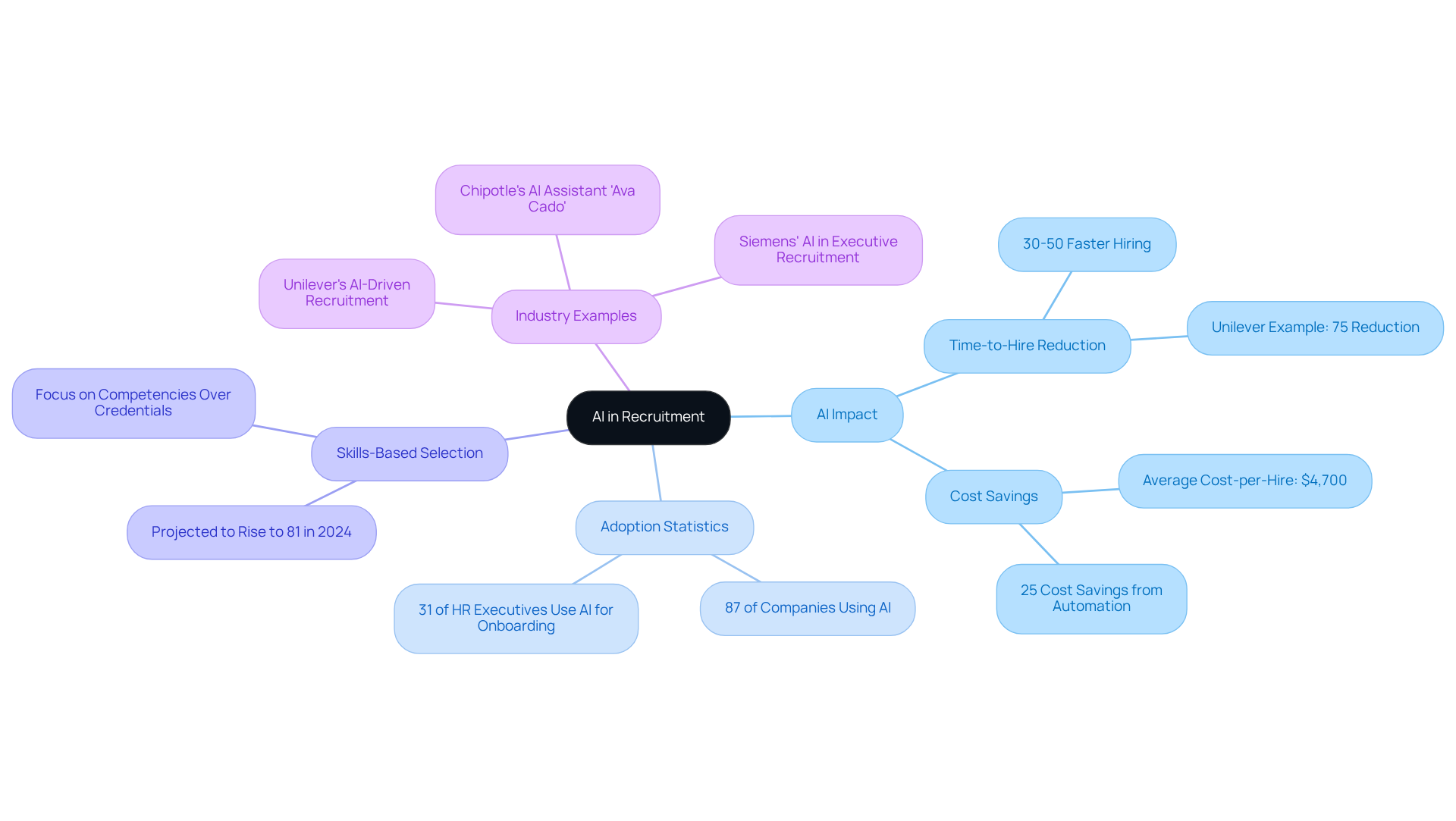
The Predictive Index: Behavioral Assessments for Data-Driven Hiring
The Predictive Index provides behavioral evaluations that enable organizations to gain valuable insights into the motivations and actions of applicants. By assessing these characteristics, recruiters are empowered to make informed selection decisions that closely align with both company culture and specific job requirements. This data-driven approach not only enhances the quality of hires but also significantly , as candidates are more likely to thrive in environments that match their behavioral profiles. In fact, organizations employing behavioral assessments have reported a turnover reduction of up to 30%, underscoring their effectiveness in cultivating a stable workforce.
Furthermore, with 65% of companies utilizing behavioral assessment tests for hiring, the integration of these evaluations into the recruitment process is essential for building resilient teams that are well-equipped to meet organizational goals. As companies increasingly emphasize cultural fit, utilizing predictive hiring signals tools such as The Predictive Index is crucial for optimizing recruitment strategies and ensuring long-term employee engagement. Moreover, behavioral evaluations facilitate the swift and impartial refinement of a vast applicant pool for high-volume positions. Ideally, these evaluations should be concise, requiring less than 30 minutes, thereby enhancing the applicant experience.
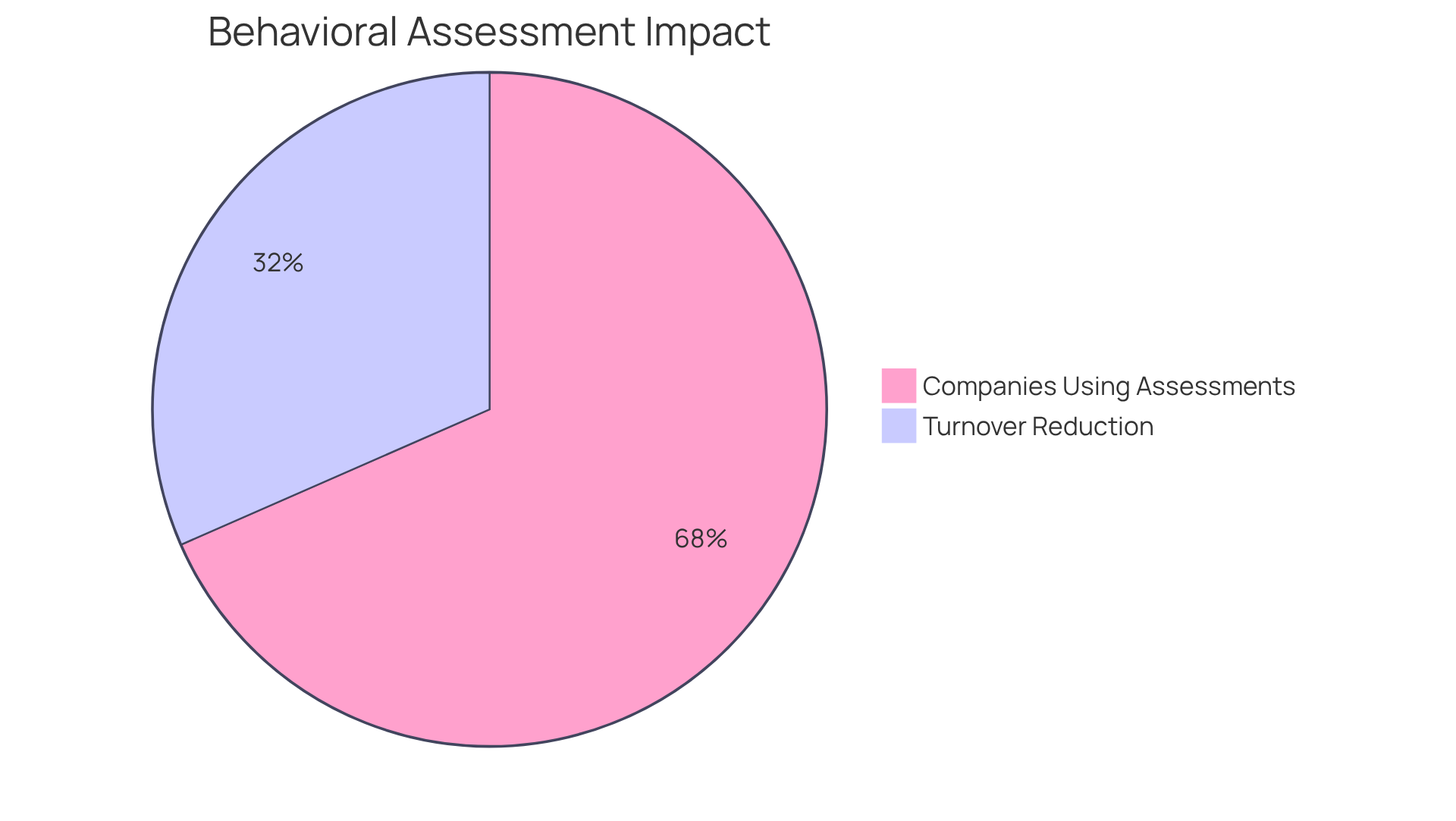
Coresignal: Predictive Hiring Guide for Anticipating Job Performance
Coresignal stands at the forefront of predictive recruitment by offering predictive hiring signals tools that empower recruiters to effectively anticipate job performance. By leveraging a multitude of data points, including historical job performance and specific skill sets, Coresignal enables organizations to identify candidates with the highest potential for success. This data-driven approach not only streamlines the recruitment process but also significantly enhances employment outcomes. Research shows that companies employing predictive hiring signals tools can achieve hiring success rates improved by up to 85%. Furthermore, by focusing on candidates who demonstrate strong alignment with job specifications, recruiters can reduce turnover and cultivate a more efficient workforce.
The integration of neural search functions, which utilize advanced AI-powered semantic query management, further refines the recruitment process by allowing recruiters to uncover hidden talent and improve applicant matching. Neural search provides a deeper understanding of candidate profiles and job descriptions, ensuring a more precise fit. Ultimately, Coresignal's predictive hiring signals tools, along with sophisticated AI-driven search technologies, empower organizations to make , ensuring they attract and retain top talent.
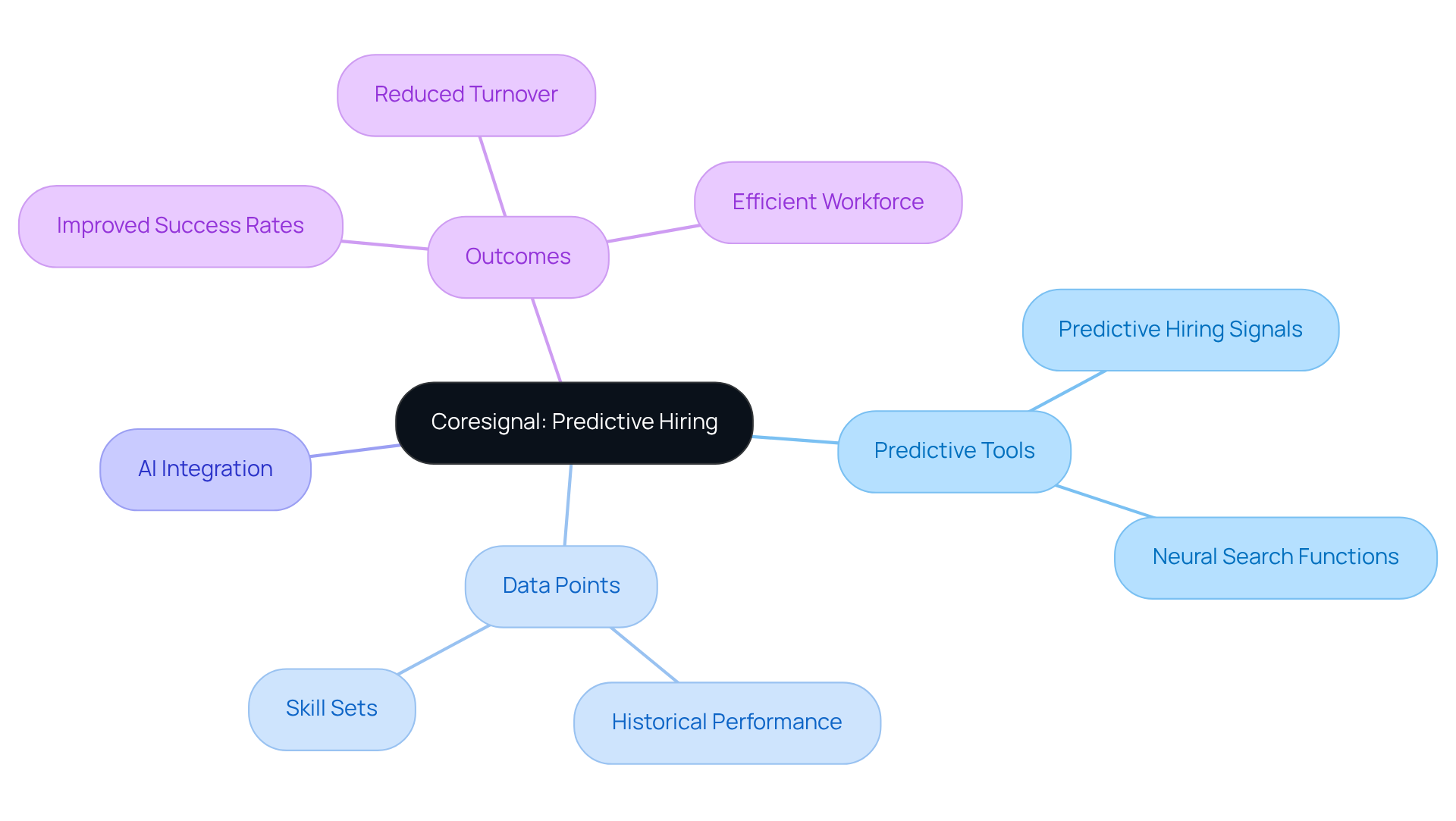
Compunnel: Predictive Analytics for Workforce Needs Forecasting
Websets' empower organizations to proactively anticipate their workforce needs by analyzing trends and patterns in recruitment data. This capability allows recruiters to foresee future talent requirements, facilitating strategic recruitment initiatives. By harnessing these insights, companies can align their recruitment efforts with overarching business objectives, ensuring they secure the right talent at the right moment.
In an environment where 87% of companies leverage AI-powered recruiting software to enhance sourcing and screening efficiency, the use of predictive hiring signals tools to predict hiring needs becomes vital for maintaining a competitive advantage. Moreover, organizations utilizing predictive hiring signals tools can reduce turnover by 15% within a year, as evidenced by a notable US tech firm, highlighting the tangible benefits of data-informed hiring strategies.
As the demand for skilled professionals escalates—illustrated by a 38% increase in the need for cybersecurity experts—utilizing predictive hiring signals tools for a robust forecasting mechanism is essential for success in today’s dynamic job market. Chris Argyris emphasizes that HR initiatives should be as analytical and data-driven as other management domains, underscoring the critical role of predictive hiring signals tools in recruitment.
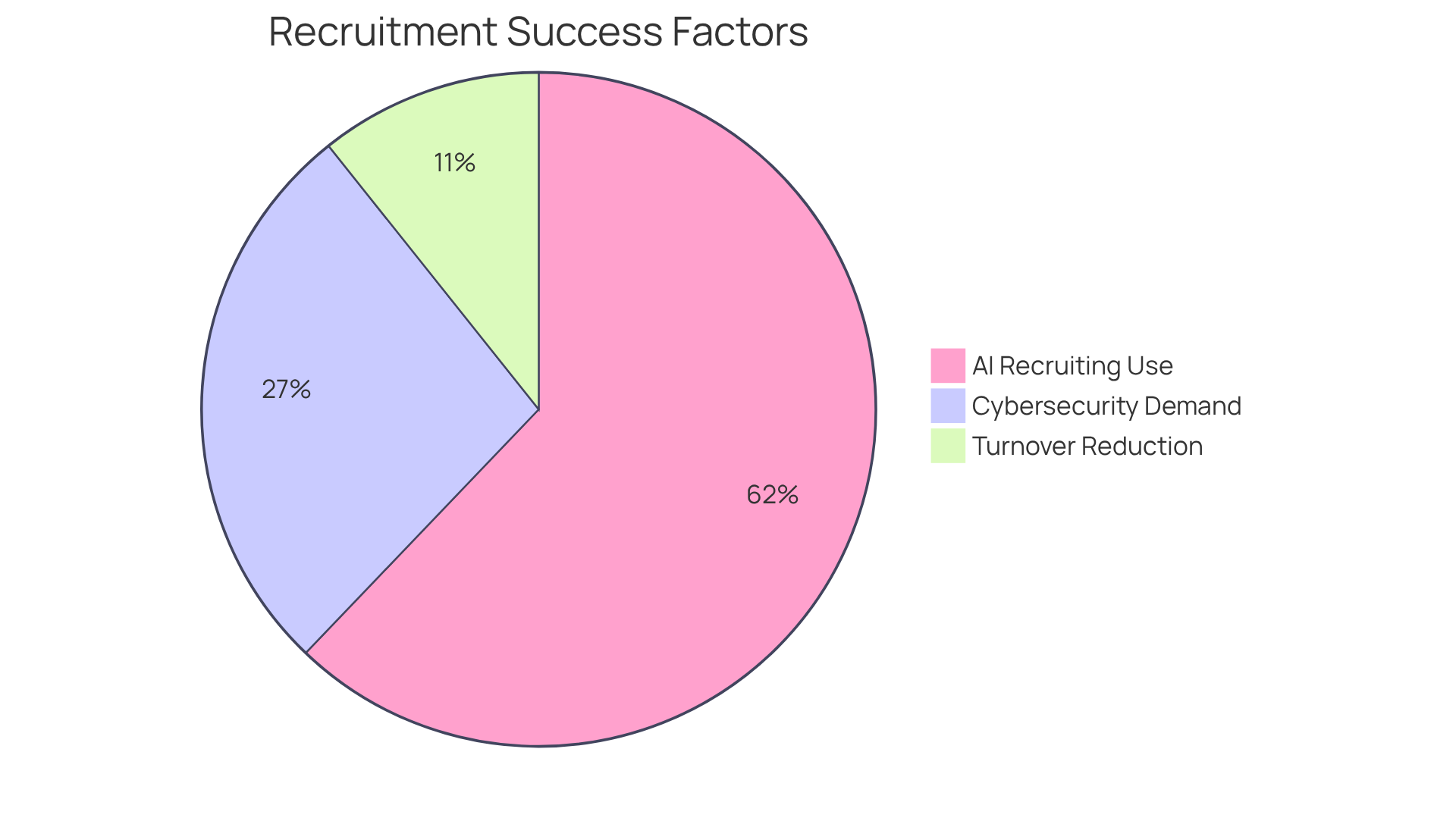
TechTree: AI-Driven Predictive Analytics for Recruitment Insights
Websets utilizes driven by AI to provide profound insights into hiring processes. By meticulously analyzing applicant data alongside market trends, Websets empowers recruiters to identify the most promising candidates and refine their hiring strategies. This approach not only streamlines recruitment but also significantly enhances the quality of hires.
Organizations using forecasting analytics fill roles 40% faster on average, thanks to pre-engaged candidates, and report a 67% improvement in talent matching. Notable success stories, such as Siemens, which achieved a 40% reduction in time-to-fill executive positions and a 30% improvement in quality of hire through forecasting analytics, underscore the transformative power of these tools.
Furthermore, 87% of hiring decision-makers believe AI saves time in the hiring process, reinforcing the efficiency of Websets' analytical forecasts. With SOC2 certification ensuring the highest level of security and compliance, Websets is designed for enterprise workloads, offering robust infrastructure and tailored support solutions.
As the hiring landscape evolves, organizations striving to excel in talent acquisition find that Websets' predictive hiring signals tools are an essential resource.
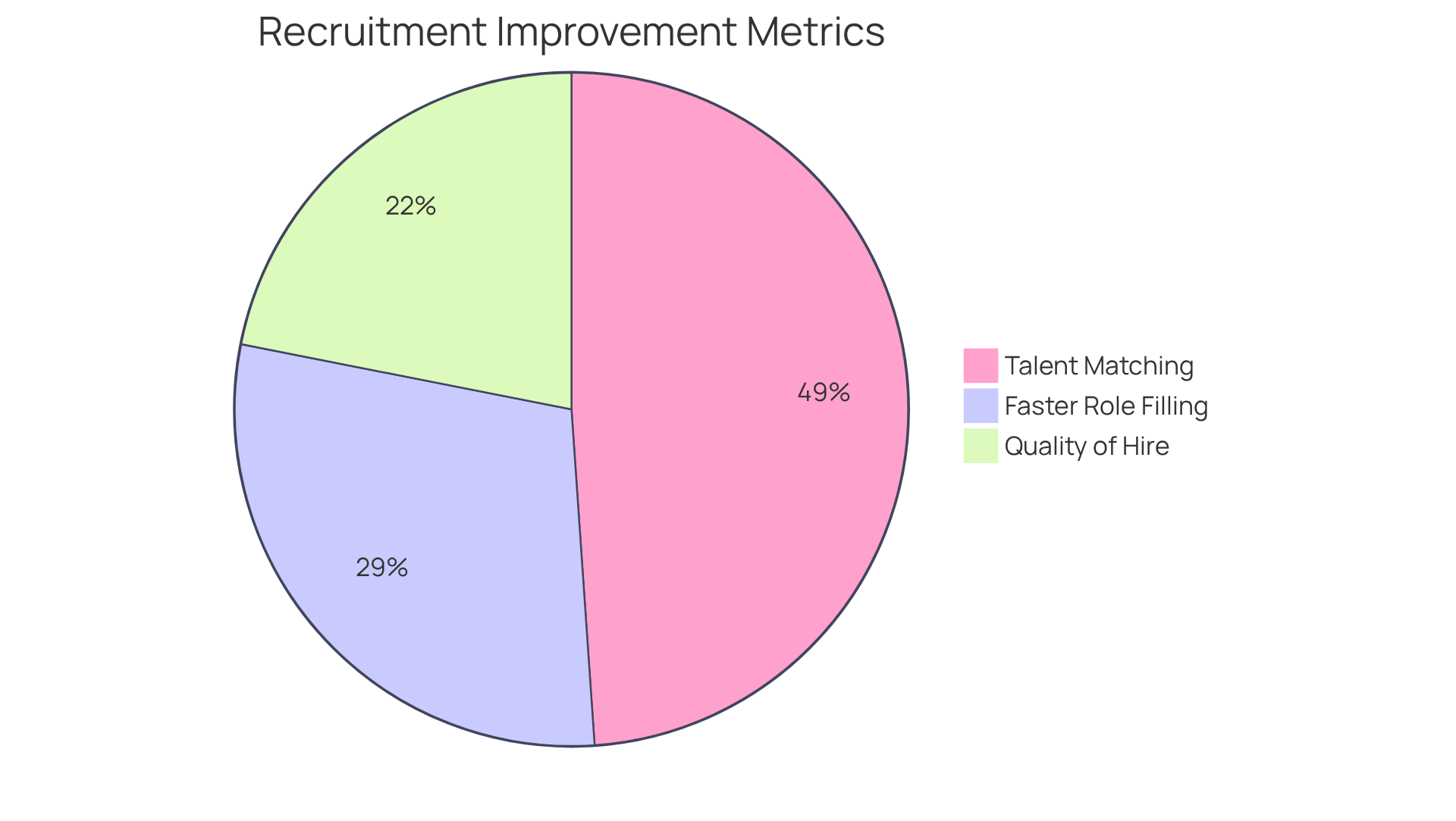
Jobspikr: Data-Driven Recruiting Tools for Identifying Top Talent
Websets provides innovative, data-driven recruiting tools, such as predictive hiring signals tools, that empower organizations to pinpoint top talent within their industries. By leveraging extensive datasets and advanced analytics, recruiters can effectively identify individuals who not only meet the required skills but also possess the essential experience for success using predictive hiring signals tools. This focused approach significantly streamlines the selection process through predictive hiring signals tools, enhancing the likelihood of hiring high-performing individuals. Organizations that utilize Websets' AI-driven candidate discovery and qualification—backed by our Frontier search powered by our AI research lab and Research Agentic API—report a marked improvement in hiring efficiency by leveraging predictive hiring signals tools. This showcases the platform's capability to optimize talent acquisition strategies.
As the job market evolves, utilizing predictive hiring signals tools is crucial for maintaining competitiveness and ensuring the right talent is matched with the right roles. The use of predictive hiring signals tools signifies a fundamental shift towards evidence-based talent decisions in predictive recruitment, enabling organizations to secure competitive advantages in their acquisition efforts. However, implementing forecasting recruitment strategies may present challenges that need to be addressed to fully realize their benefits. Websets' services are applicable across diverse geographical areas, making it a aiming to enhance their recruitment processes.
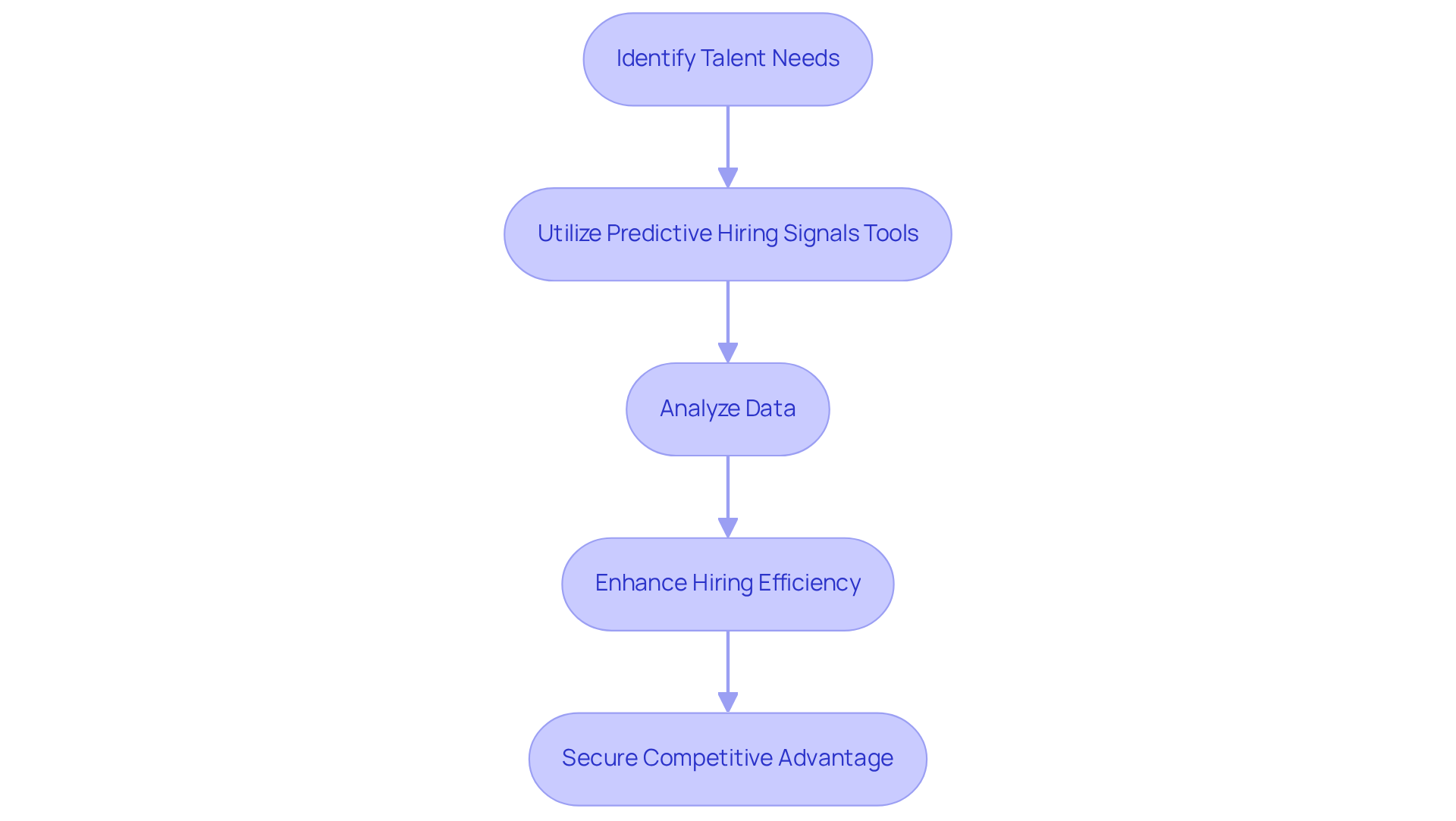
LinkedIn Pulse: Evolving Hiring Practices with Predictive AI
LinkedIn Pulse reveals the transformative effects of predictive hiring signals tools on recruitment practices across various industries. This shift towards skills-based recruitment and the growing emphasis on soft skills equip recruiters with crucial insights into AI's profound impact on talent acquisition.
Consider Unilever's AI-driven selection process, which has significantly reduced time to fill positions while enhancing candidate satisfaction. Such examples showcase the effectiveness of AI in staffing. Moreover, statistics show that AI hiring tools can reduce time-to-hire by up to 70%, underscoring the efficiency gains organizations can achieve.
This knowledge empowers organizations to adopt innovative hiring strategies that utilize , significantly improving the effectiveness of the hiring process. As AI continues to evolve, its integration into hiring practices is not merely a trend; it represents a fundamental shift in how organizations attract and engage talent.
However, it is imperative to address ethical considerations surrounding AI in recruitment to ensure fair practices and mitigate biases.
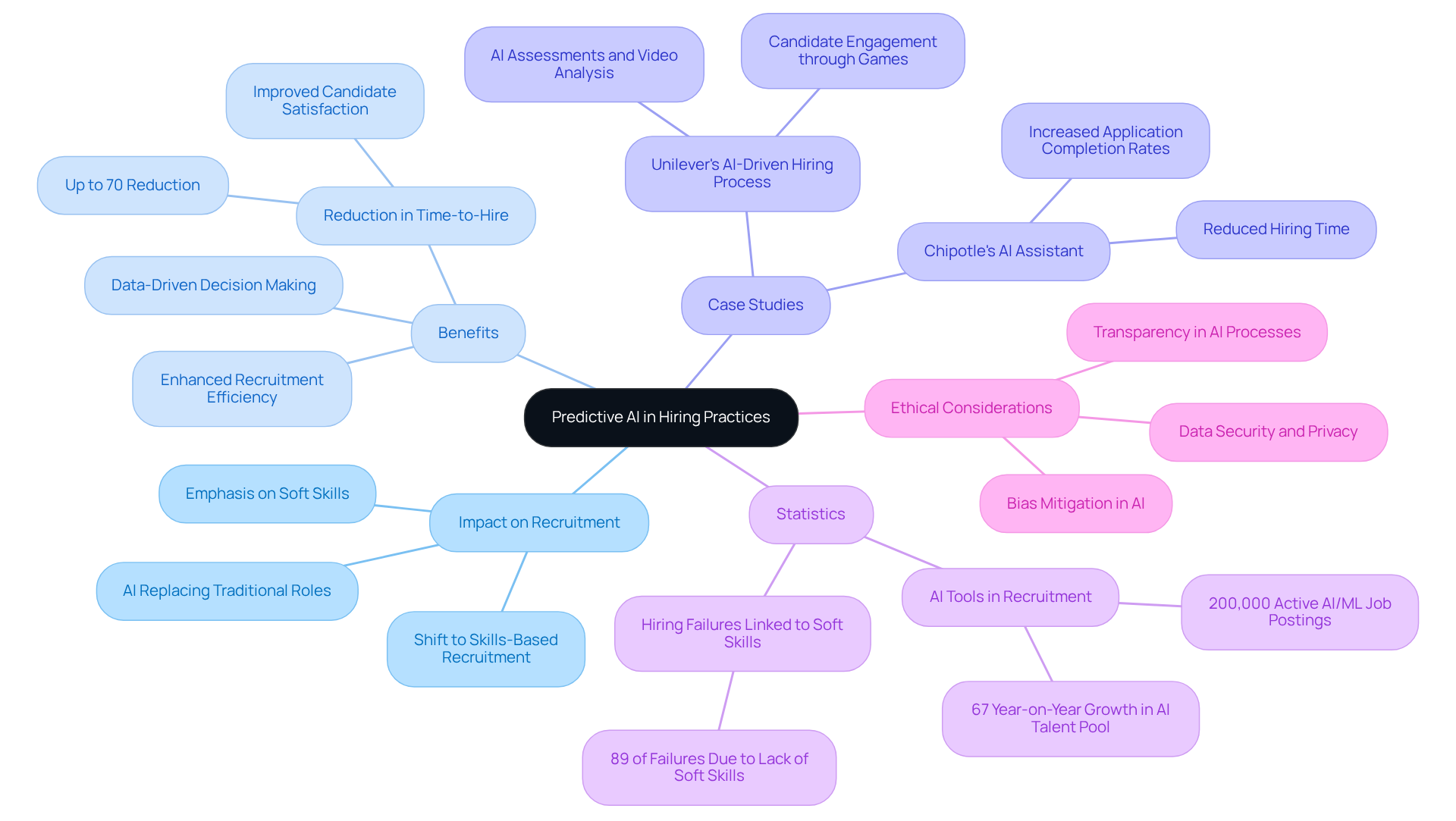
WorkGenius: Predictive Hiring for Freelancer Ecosystems
Websets stands at the forefront of foresight recruitment within freelancer ecosystems, leveraging advanced AI-driven search tools that empower organizations to effectively identify and engage top freelance talent. By harnessing forecasting analytics alongside Websets' unique capabilities for complex queries, companies can accurately anticipate their freelance needs and align them with the ideal candidates. This data-driven approach not only streamlines the recruitment process but also enhances agility, allowing organizations to swiftly adapt to evolving project requirements.
With the to reach 86.5 million in the U.S. by 2027, and the number of freelancers having surged by 90% from 2020 to 2024, the ability to match talent with project requirements has become increasingly vital. Businesses employing predictive hiring signals tools, supported by Websets' advanced AI-driven search solutions, report notable improvements, including:
- A 28% increase in retention rates
- A 36% reduction in ramp-up time
These improvements are linked to the implementation of a success score based on projections.
Engaging top freelance talent through analytics not only enhances hiring efforts but also positions organizations to thrive in a competitive landscape. Are you ready to transform your recruitment strategy and unlock the potential of the freelance workforce?
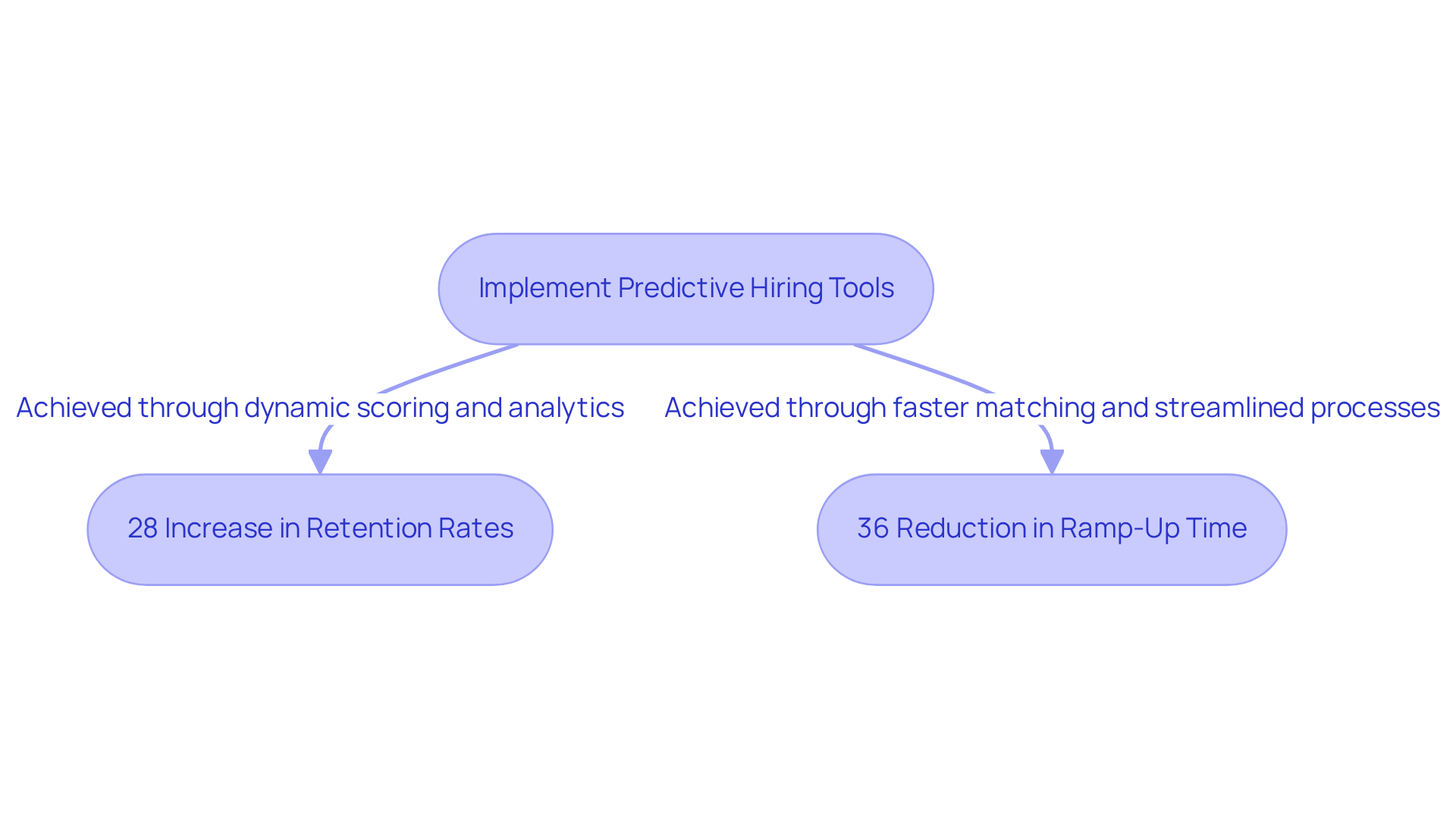
AI-Recruitment.co: Best Practices for Predictive Hiring Analytics
AI-Recruitment.co presents a comprehensive manual on the optimal techniques for forecasting recruitment analytics. By outlining effective strategies for implementing predictive hiring signals tools, AI-Recruitment.co empowers organizations to enhance their recruitment efforts. This invaluable resource is tailored for recruiters aiming to enhance their processes through data-driven insights and predictive hiring signals tools. Remarkably, predictive analytics can reduce recruitment cycles by up to 85% and shorten time-to-fill by 25%, enabling recruiters to fill positions more swiftly and effectively.
Success stories underscore the efficacy of these tools. For example:
- Unilever has refined its selection process through , resulting in improved candidate satisfaction and reduced employment duration.
- Chipotle's AI assistant boosted application completion rates from 50% to 85%, slashing the recruitment timeline from 12 days to just 4.
- AI hiring tools have been shown to enhance workforce diversity by 35%, further elevating hiring outcomes.
To bolster hiring efforts, organizations must focus on data quality and the continuous improvement of predictive hiring signals tools. This entails auditing historical profiles and performance metrics to ensure unbiased data, which is essential for accurate predictions. Regular algorithm audits are critical for identifying and eliminating biases, thereby addressing ethical considerations as companies increasingly integrate AI into recruitment. By 2025, it is expected that 95% of preliminary applicant screenings will be automated, highlighting the transformative impact of these technologies.
Integrating forecasting analytics not only enhances efficiency but also supports strategic decision-making in talent acquisition. As Kurt Vosburgh aptly notes, AI-powered talent acquisition is the "secret sauce" that is revolutionizing how we identify, assess, and engage top talent. By treating candidates as valued customers and leveraging data-driven insights, organizations can significantly improve their recruitment results and cultivate diverse, high-performing teams.
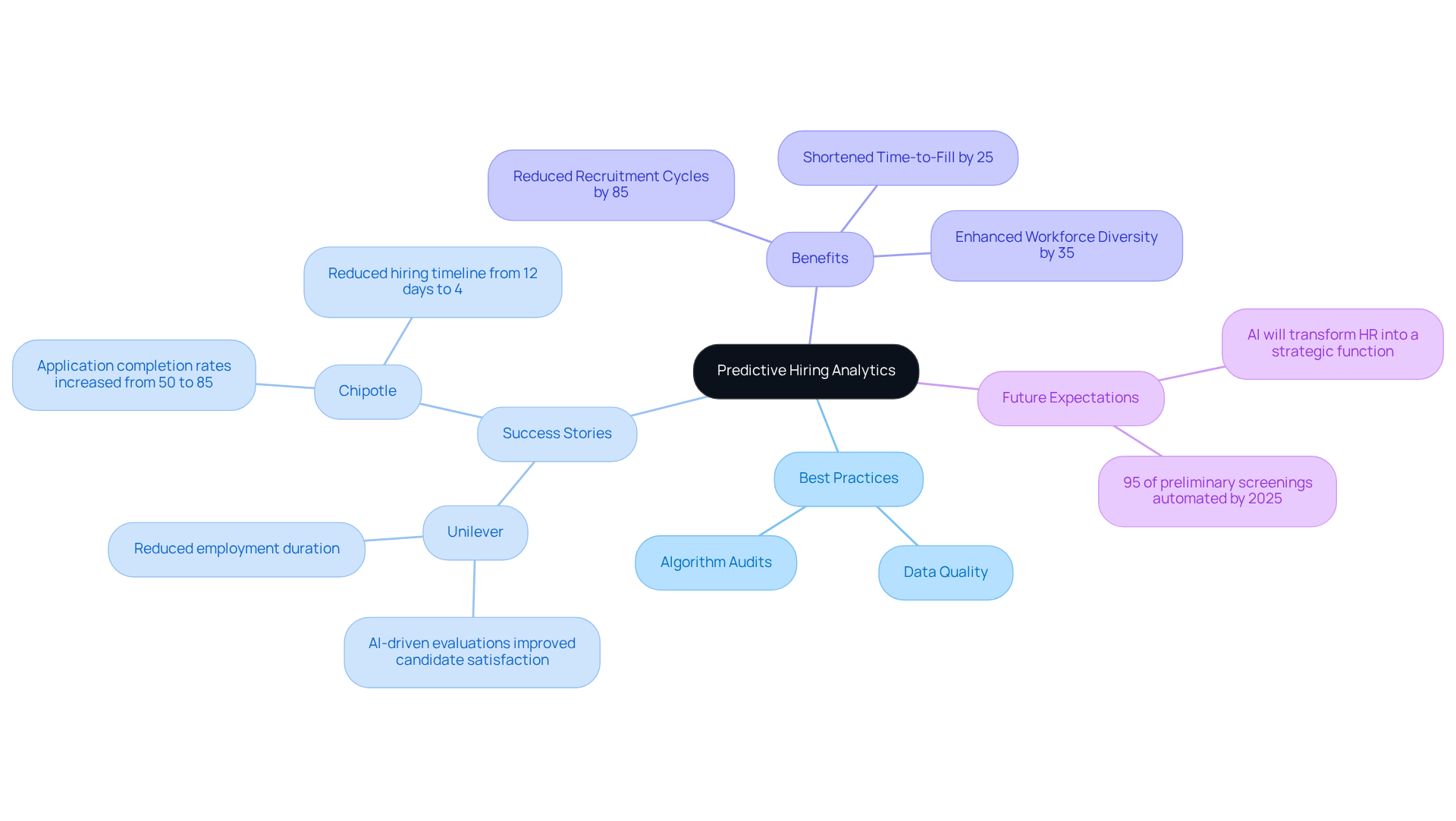
Future of Hiring: Leveraging Predictive Analytics for Talent Acquisition
The future of recruitment is increasingly shaped by predictive hiring signals tools, establishing itself as a cornerstone for effective talent acquisition. Organizations that utilize predictive hiring signals tools can significantly enhance their talent acquisition strategies, enabling them to identify top candidates more efficiently and streamline selection processes. For instance, companies employing AI tools for scheduling interviews have reported time savings of up to 36% compared to traditional methods, highlighting the efficiency gains achievable through predictive insights.
By 2025, an estimated 60% of organizations are expected to utilize AI for end-to-end recruitment processes, which will include the adoption of predictive hiring signals tools, signaling a growing trend towards data-focused employment practices. This shift not only accelerates recruitment but also improves the quality of selected candidates. A study by The Inclusion Initiative revealed that organizations utilizing predictive hiring signals tools can boost efficiency and diversity in candidate selection; those aligning their AI tools with clear objectives have seen up to a 48% increase in diversity recruitment effectiveness.
Real-world examples further underscore the impact of predictive analytics in recruitment. For example, Chipotle's AI assistant 'Ava Cado' elevated application completion rates from 50% to 85%, significantly reducing recruitment timelines. Similarly, Fountain's AI recruitment assistant automates the screening process for frontline workers, providing structured feedback and allowing candidates to engage in their native language, thus enhancing the overall candidate experience.
As organizations increasingly adopt forecasting analytics, they must also focus on ethical considerations and ensure transparency in their recruitment processes. The ongoing lawsuit against Workday highlights the risks associated with AI in hiring, underscoring the necessity for companies to integrate ethics into AI deployment and conduct regular bias assessments. Ultimately, leveraging predictive hiring signals tools not only but also fosters a more inclusive and effective recruitment strategy.
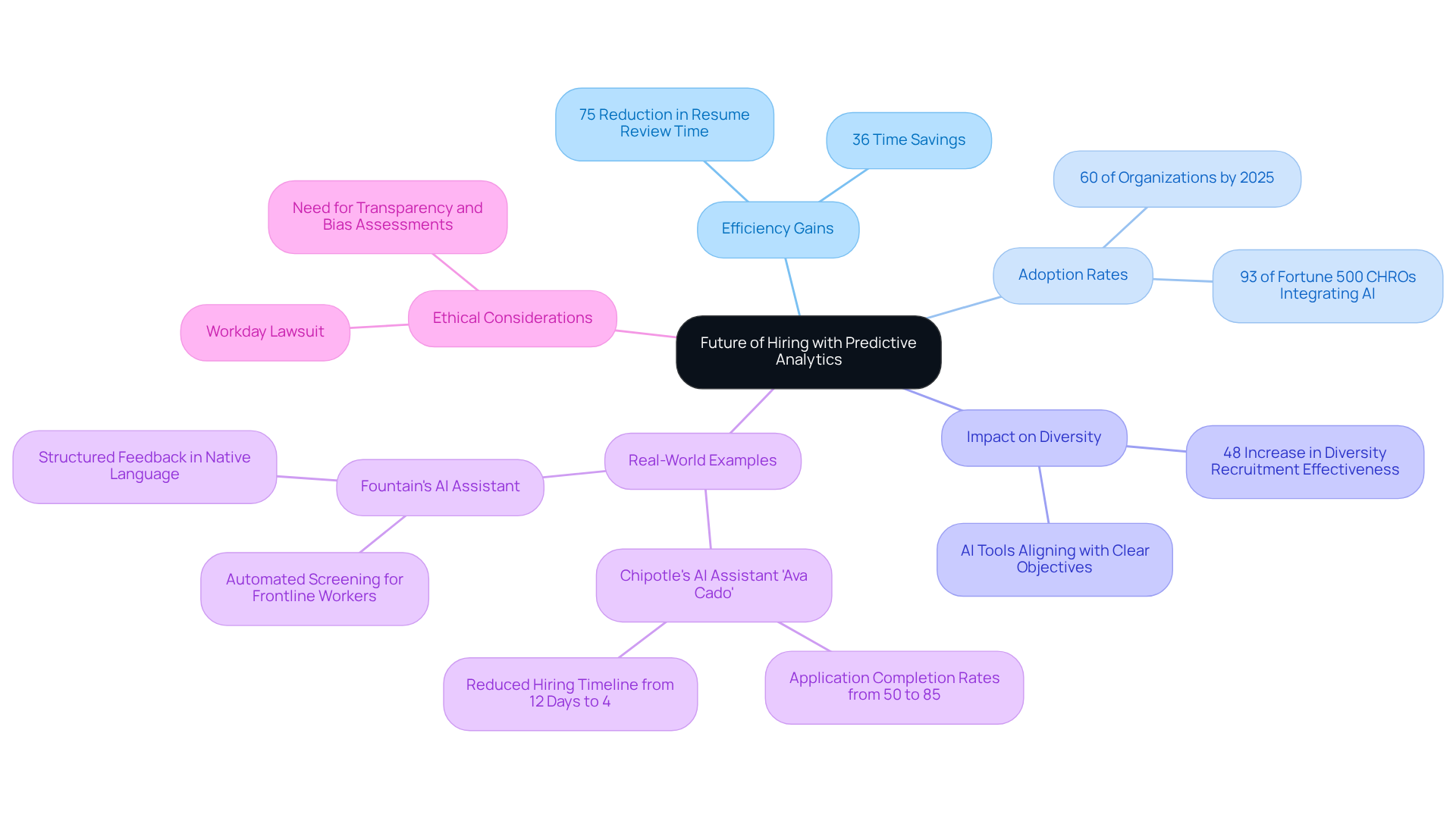
Conclusion
The integration of predictive hiring signals tools is revolutionizing recruitment strategies, enabling organizations to significantly enhance their hiring processes. By leveraging advanced analytics and AI technologies, companies can identify top talent more efficiently, reduce time-to-hire, and improve overall candidate quality. These tools are not merely trends; they represent a fundamental shift towards data-driven decision-making in talent acquisition that promises to reshape the future of hiring.
Throughout the article, various predictive hiring tools were highlighted, including platforms like Websets, The Predictive Index, and Coresignal, each offering unique capabilities to streamline recruitment. The benefits of these tools are evident, with statistics showing remarkable improvements in hiring efficiency, turnover reduction, and alignment with company culture. Companies that embrace these technologies are not only filling positions faster but also cultivating diverse and high-performing teams, underscoring the importance of predictive analytics in modern recruitment.
As the job market continues to evolve, organizations must prioritize the adoption of predictive hiring signals tools to maintain a competitive edge. Embracing these insights will not only enhance hiring outcomes but also promote a more inclusive and effective recruitment strategy. It is crucial for companies to address ethical considerations and ensure transparency in their processes as they integrate AI into their hiring practices. By doing so, organizations can unlock the full potential of predictive analytics and transform their talent acquisition efforts for the better.
Frequently Asked Questions
What is Websets and how does it enhance the recruitment process?
Websets is an AI-driven platform that transforms predictive hiring by using advanced algorithms to help recruiters identify and connect with suitable candidates. It features a powerful search engine that navigates extensive datasets, enriching search results with information like LinkedIn profiles and previous work experience, thus streamlining the hiring process and improving the quality of hires.
What impact does AI have on hiring efficiency according to the article?
AI significantly improves hiring efficiency, with firms reporting a 30-50% reduction in time-to-hire and substantial cost savings. The article notes that 87% of companies are integrating AI into their hiring processes, indicating a strong trend toward automation.
How does the use of behavioral assessments, like those provided by The Predictive Index, benefit organizations?
Behavioral assessments help organizations gain insights into applicants' motivations and actions, allowing recruiters to make informed hiring decisions that align with company culture and job requirements. This approach enhances the quality of hires and can reduce turnover rates by up to 30%.
What percentage of companies currently use behavioral assessments in their hiring processes?
Approximately 65% of companies utilize behavioral assessment tests for hiring, emphasizing their importance in building resilient teams and optimizing recruitment strategies.
How does Coresignal contribute to predictive hiring?
Coresignal offers predictive hiring signals tools that enable recruiters to anticipate job performance by leveraging various data points, including historical job performance and specific skills. This data-driven approach improves hiring success rates by up to 85% and helps reduce turnover.
What technology does Coresignal use to refine the recruitment process?
Coresignal employs neural search functions, which utilize AI-powered semantic query management to uncover hidden talent and improve applicant matching, ensuring a more precise fit between candidates and job descriptions.
What are the expected trends in recruitment as we approach 2025?
As we approach 2025, the integration of AI in recruitment is expected to enhance efficiency, reduce bias, and improve applicant experiences, positioning platforms like Websets at the forefront of these advancements.




